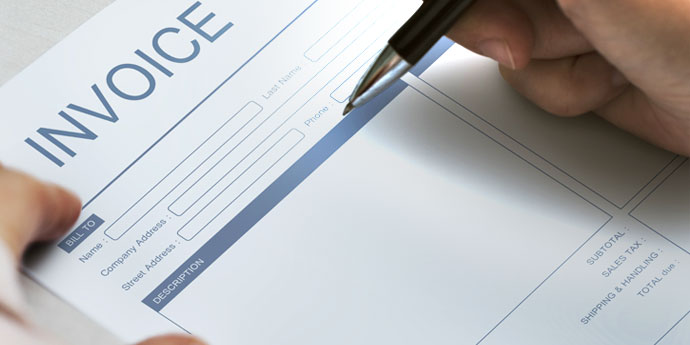An invoice sometimes called as the sales or business invoice is a document sent by a provider of a product or service to the purchaser. It initiates an obligation on the part of the purchaser to pay the amount mentioned on the invoice and thereby creating healthy cash flow. In simple words, it is a written payment agreement between the seller and buyer of the services or goods. Now, let’s quickly run through the business invoice template essentials.
Your business name and contact information:
First and foremost is to clearly mark all the invoices with the word ‘invoice’. It eliminates potential confusion to your customers and indicates that it’s a payment request rather than just a receipt.
All businesses should include their contact information on their invoice which contains the following
- Name
- Phone number
- Email address
It then becomes easier for your customers to identify you and swiftly raise queries about your invoice if any. If you are a limited company then you will have to enter your company registration number and your registered address. If you go by any trading name, make sure to show your trading name alongside the formally registered name.
An invoice number or reference number:
All invoices have a unique reference code or an invoice number which could be a single digit (Invoice: No: 1) or sequence of numbers (Invoice: No: 0001). This means that you’ll have to keep an exact record of all the invoices that you have sent in the past so that you don’t duplicate one accidently.
To make it even simpler, you can include letters if you want to. For instance, the first invoice for ABC Care could be ABC001 and the one issued for MyCompany could be MYC001. This method is useful particularly when you are dealing with a lot of repeat customers.
Invoice date or supply date:
Invoice date defines the date on which the invoice is created. It is not necessarily the date the services or products covered by the invoices were provided. On the other hand a ‘supply date’ is mentioned on VAT invoices.
Name and address of the recipient:
Clearly list your customer’s details which include the contact person’s name and title, phone number, email address. If you are working with larger organizations, make sure to include the physical address as well.
A breakdown of products or services provided and their cost:
Include and itemize description of each project, task, and product or service you’re invoicing for.
For instance, if you sell an item, your invoice should contain the following:
- Number of items purchased
- The quantity purchased
- Price per item
- Total price
If you are providing a service, then your invoice should list the following:
- Flat fee or hourly for the service
- Total hours worked
- Total fee
Make sure to clearly mention the date when the product was sold or when the service was provided. It is less likely that a customer will contact you to query the invoice if you provide a clearer description.

